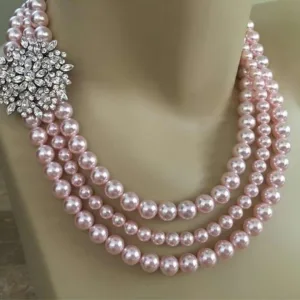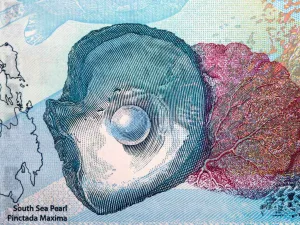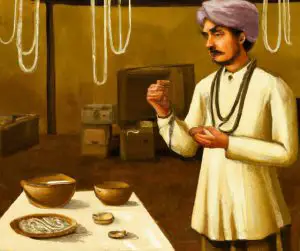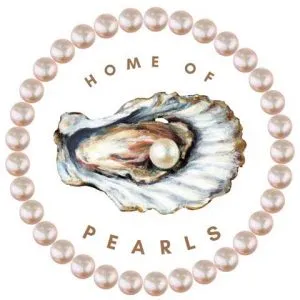How to estimate pearl weight
In the pearl trade, pearls are bought and sold by weight, and historically their weight is expressed in grains.
The reference to grains as a system of measurement dates as far back as the Bronze range. It refers to the weight of a single cereal seed (wheat/barley).
There are four grains to one metric carat. Thus, the pearl grain is metric weight, 1 grain = 0.25 ct (a quarter of a carat).
The pearl grain weight is a metric weight and has no bearing on or relationship to troy weight (used for metal, gold, silver, etc.) or avoirdupois (the old Imperial system for commodities such as sugar, sausages, potatoes, etc.) systems of mass.
Whilst touching briefly upon the older system of weights and measures, it is an aspect of the international interest in pearls that natural pearls are weighed in grains but are reported on the World Jewellery Confederation (in French, Confédération Internationale de la Bijouterie, Joaillerie, Orfèvrerie des Diamants, Perles et Pierres) CIBJO certificates in carats.
Cultured pearls are reckoned in millimeter sizes and sold by the momme (= 3.75 grams). In general, the length of necklaces is expressed in inches.
Conversely, all other gemstone weights are expressed in metric carats, e.g., comparing a spherical drilled pearl weighing 10 grains with a ruby of equivalent weight, the latter would be written as 2.50 carats.
1 grain = 1/5760 Troy Pounds = 1/7000 Avoirdupois Pounds
Systems of mass measurement
Pricing of a single pearl
Pearls are not priced at so much per grain but by an elaborate method using a base price referred to as the ‘unit base price’.
By a simple squaring of the weight of a pearl in grains and multiplying the result by the base (unit) price, the value is arrived at.
Pricing of a group of pearls (pearl necklace)
In the case of a pearl necklace, the method is a little more complicated but only in simple arithmetical terms. If one pearl is dealt with on its own, it is simply a matter of multiplying its weight in grains by itself (once times) and then multiplying the result by the base value arrived at by the pearl merchant using the unit base price.
This typically requires grouping pearls by weight and then computing the average unit base for each group. The unit base for each group is then summed to arrive at the final cost of the pearl.









